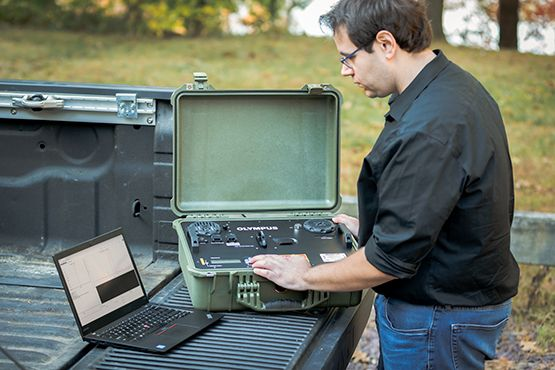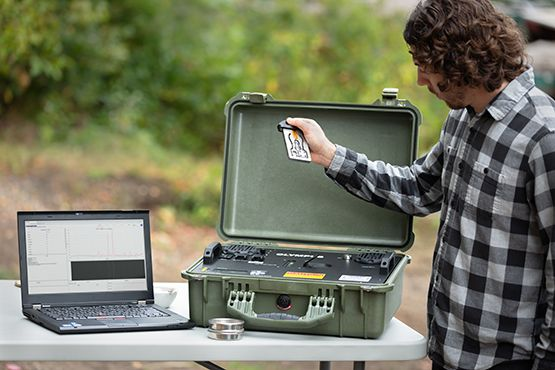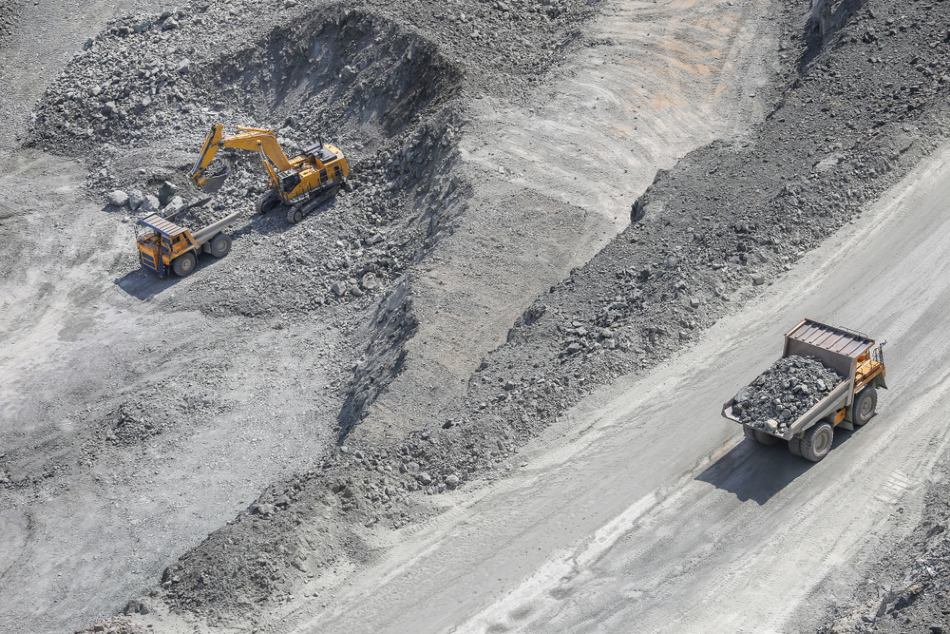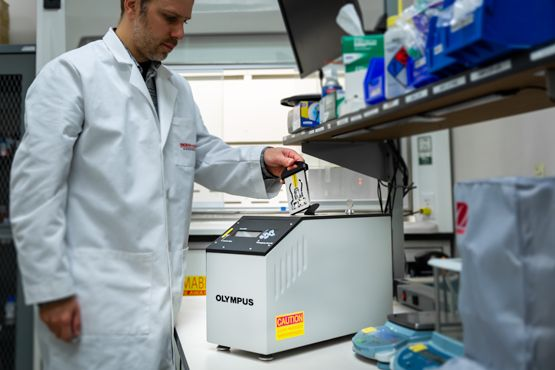AZoM recently spoke with Ted Shields from Olympus about the development of advanced portable and benchtop X-ray diffraction (XRD) analyzers. Ted discusses the unique features of two new products that bring speed and ease of use to both field and lab applications.
The portable TERRA II and benchtop BTX III mobile XRD analyzers provide automated quantitative XRD. Was there a gap in the market for this product?
Traditionally, users needed to be familiar with extensive databases to perform X-ray diffraction. They had to go through an extensive database, match up graphical fingerprints to known compounds, then choose the ones that were actually present. This was an extremely time-consuming task that required a technical expert.
We have developed two new analyzers that radically simplify X-ray diffraction due to the use of our automated quantitative XRD software, SwiftMin®. The software has an intuitive user interface and delivers real-time data onboard the analyzer to streamline workflows. Now technicians can get more done and make decisions faster—without an expert present.

How will the updated X-ray detector impact productivity in XRD applications?
The new detector processes signal faster and yields significantly higher intensities. This decreases the analysis time from sample introduction to final results. It also eliminates the expense and time spent searching databases.
Can you tell us about other time-saving features on the new XRD analyzers?
Lab managers can add pre-set recipes and calibrations in the user interface to automate routine daily analyses for technicians. When a technician runs a test, our SwiftMin software automatically looks for, identifies, and quantifies the pre-set recipes to provide reliable and quick results.
What is the process for running an XRD analysis test using the mobile analyzers?
Running a test only requires a few steps:
- First, prepare the sample.
- Next, add the sample to the instrument.
- Then click start to begin analysis.
While the test runs, the operator is free to carry out other tasks until it’s time to begin another analysis.

How does Olympus’ mobile XRD method compare to conventional XRD methods?
Olympus’ XRD method differs greatly from conventional methods. We use an innovative and viable transmittance technique. . In addition, our unique small sample holder turns the entire experiment into a pseudo-thin-film analysis. This greatly reduces the effects of density and peak broadening associated with traditional instruments.
Conventional XRD requires expensive sample preparation because conventional systems use a bulk approach, so users need to grind their powders to less than 20 µ. This requires expensive and specialized equipment. On the other hand, Olympus XRD users only need to crush to approximately 250 µ, before passing it through a sieve to ensure proper particle distribution.
What sets the TERRA II XRD instrument apart from other field analyzers on the market?
Other field portable instruments require a minimum of 110 V power and weigh upwards of 80 pounds. These instruments also contain robotic moving parts that do not travel well and require extensive realignments once on site.
In contrast, the lightweight TERRA II XRD analyzer has no moving parts, uses less operational power than a 50-watt light bulb, and can operate on battery power for five to six hours, depending on the age of the batteries and usage.
What applications will benefit from the increased speed and sensitivity of the TERRA II analyzer?
Any application that requires on-site and immediate results can benefit, including: petroleum exploration that requires answers on location; mining operations that need to monitor drilling operations on a minute-by-minute basis; rock quarries that supply raw feed to cement plants; US Customs agents who need portable analytical instrumentation at ports of entry; and finally, FDA agents who want to investigate counterfeit drugs at distribution sites or ports of entry.

Image Credit:Shutterstock/ShuBa
How does the BTX III XRD analyzer differ from other benchtop XRD instruments?
Users can connect the lightweight BTX III XRD analyzer to a battery backup (UPS) and transport it from room to room. These features are a major advantage for teaching environments.

How does the BTX III XRD analyzer run without the need for compressed gas, water cooling, and secondary chiller? What applications benefit from this?
The BTX III XRD analyzer uses a 40 W X-ray tube, which is air cooled because it’s low voltage. The detector is Peltier cooled (Peltier is an electronic form of cooling that works by electron flow). In general, X-ray diffraction instruments do not use compressed gas. All applications can benefit from these features since it keeps the cost of ownership low.
How will the two new mobile XRD analyzers impact future applications?
The impact of Olympus’ mobile X-ray diffraction analyzers on some applications is just now being realized. For example, some universities have put our XRD analyzers in gloveboxes. One university has mimicked the Martian atmosphere to replicate data coming back from the Martian rover.
Another university is using our BTX II analyser in a large room-sized glovebox. They have recreated the Precambrian atmospheric conditions to investigate the effect of meteor impacts on early plant and animal development.
Conventional XRD instruments lack the agility to adapt to these demands. In cases like this, the advantages of Olympus mobile XRD can’t be overstated.
Where can our readers learn more?
To learn more about our TERRA II and BTX III mobile XRD analyzers, visit https://www.olympus-ims.com/en/ or contact your local sales representative. You can also read our blog post, Your Quick Guide to Fast Quantitative XRD Analysis to see just how easy it is to run a test.
About Ted Shields.jpg)
Ted Shields has been an Olympus employee for 12 years and a Product Manager for over 10 years. As Senior Product Manager, he has brought the revolutionary Vanta™ line of handheld XRF analyzers to market starting in 2016. Ted holds a master’s degree in Applied Physics.
Disclaimer: The views expressed here are those of the interviewee and do not necessarily represent the views of AZoM.com Limited (T/A) AZoNetwork, the owner and operator of this website. This disclaimer forms part of the Terms and Conditions of use of this website.